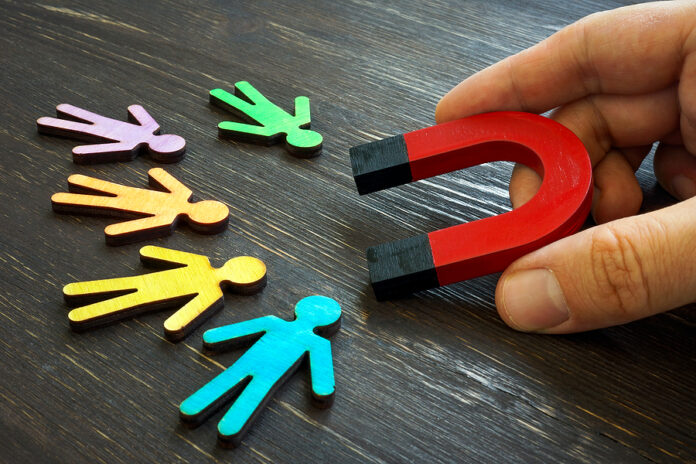
By Kim Henderson, Cobalt Compass Solutions
As the staffing industry evolves, employee retention remains a top priority. With the unemployment rate hovering at 3.6% in June, top producers in staffing have the power to select their employer of choice. A successful retention strategy starts with acknowledging that you won’t solve your current challenges by applying the solutions of the past. So how do you keep your performers?
Create an advancement path
Do you have a defined roadmap for employees to excel and receive promotions within the organization? If not, work to create an advancement plan for producers in all areas of the company. People want to understand that if they achieve results, there is a structure in place to get to the next level. Map out the steps for them to obtain the role they want, and provide them the support to get there.
Solid leadership
We have all worked for leaders that made an impact on our career. Conversely, there are leaders that failed to support us, and we merely punched a clock to deliver the performance needed. Are you truly listening to your team? What is important to them? Do you genuinely care about their success, and are you vested in helping them achieve? Don’t go through the motions — consider their ideas. It is often said that to be an effective leader you must have a servant’s heart, placing the employees’ needs and well-being before your own. If you have leaders that can’t maintain a staff, it is wise to evaluate their shortcomings and make adjustments to minimize attrition.
Continuous education, learning & development
No recruiter or sales professional wants to do the same task for decades and not enhance their skill set. Learning is a lifelong journey, and the cost of certifications and advanced degrees is steep. Invest in comprehensive training programs and workshops that enhance their skills, expand their knowledge, and enable career advancement. Encourage employees to pursue certifications, attend industry conferences, and participate in webinars. Offering personalized development plans and opportunities for learning not only strengthens employee engagement, but also demonstrates the company’s commitment to professional growth and increases retention rates.
Mentor programs
In the hybrid model, many newer staffing employees struggle to receive the needed coaching required to be successful in their role. We learn through hands-on experience, collaboration, and mentors that can teach us on the spot. Consider establishing a mentor/mentee program in your organization to foster a sense of community among workers and help individuals get the personalized attention they need. Implement mentorship programs where experienced professionals can guide and support junior staff members.
Flexible schedules
Many companies in the Defense industry successfully implemented the 9/80 work schedule years ago. Essentially workers log a nine-hour day and have every other Friday off. While this may not work for all staffing companies, consider flexible times that allow employees to start and end their day outside of the 8 to 5 schedule. This flexibility enables a better work-life balance, reduces stress, and increases job satisfaction. Leverage technology to foster seamless collaboration and communication among remote teams. Further, establish clear guidelines and expectations to ensure accountability and productivity. By embracing flexible work arrangements, staffing companies demonstrate their commitment to employees.
Better benefits and competitive compensation
It is no secret that healthcare costs a small fortune. Whether it is copays, deductibles, or out of pocket expenses, it is a concern for all employees. If you have not evaluated your company medical benefits in a while, it may pay to shop around and provide a variety of plans. Offering catastrophic plan healthcare with a high deductible won’t make you competitive, and employees may look elsewhere to offset this cost. Offering competitive compensation packages is crucial to retaining skilled recruiters and sales professionals. Regularly review and benchmark salaries to ensure they align with industry standards. Provide performance-based incentives, competitive commissions, and bonuses to reward high achievers. In addition, know what your competition is offering.
Your brand
How is your brand among current workers? Employees are your brand ambassadors — everywhere they go, they’re advertising your company. Is it viewed as a great place to work? Regularly conduct employee engagement surveys to gauge their satisfaction levels and address any concerns promptly. All organizations have their “blind spots,” so you don’t know if there are issues unless you ask. By prioritizing a positive work culture and brand, organizations can cultivate loyalty and enhance retention rates.
How will you refine your retention strategy?
 Kim leads Cobalt Compass Solutions, which provides consulting and training services for the staffing industry. Training programs encompass the full life cycle of sales and recruiting and teach the skills and strategies to create lasting customer relationships.
Kim leads Cobalt Compass Solutions, which provides consulting and training services for the staffing industry. Training programs encompass the full life cycle of sales and recruiting and teach the skills and strategies to create lasting customer relationships.
Prior Cobalt Compass, Kim had 28 years in the industry and served as a member of executive leadership at Hays PLC. As SVP of Client Services and Global Accounts, she was responsible for the development of international and strategic accounts and also established the Government Solutions business. Before joining Hays, Kim worked for Kforce where she served on the executive team and was responsible for the national sales strategy with execution across product lines.
Kim has a MBA from the University of Miami and a BS in Journalism from the University of Florida. Additionally, she has Project Management (PMP) and Six Sigma Lean certifications and contributes as a freelance writer for The Staffing Stream and SHRM.org blogs. Further, she has appeared on the Staffing Hub, Fidelis Leadership, and Ivy Podcasts as a guest.





